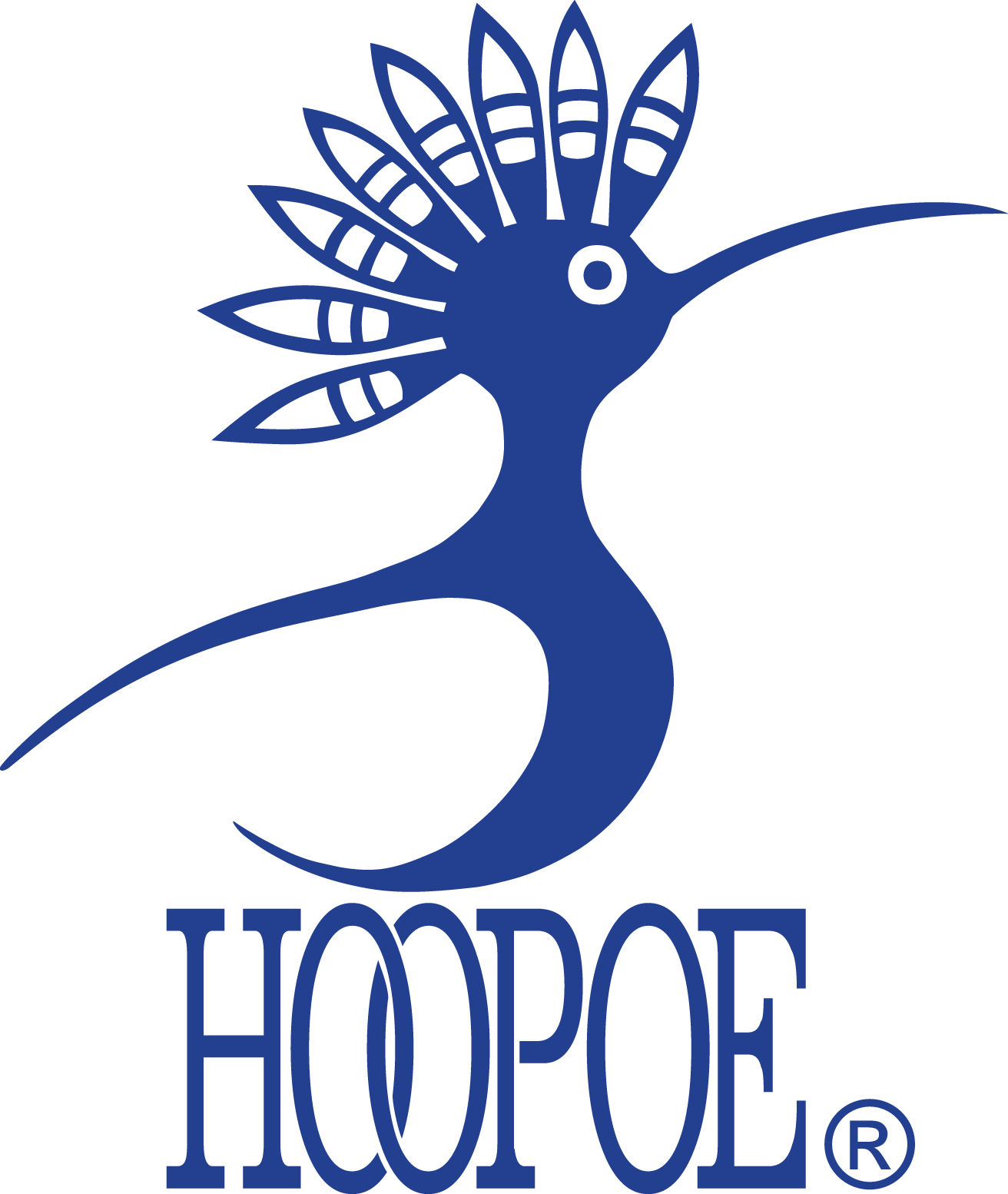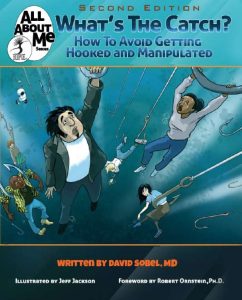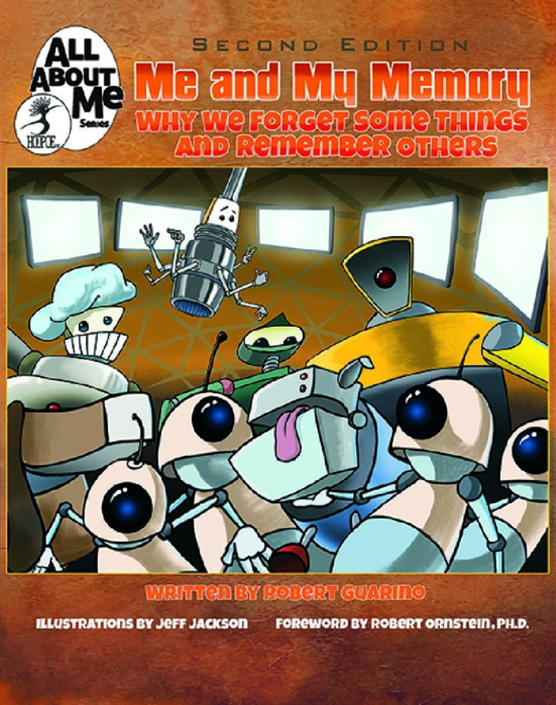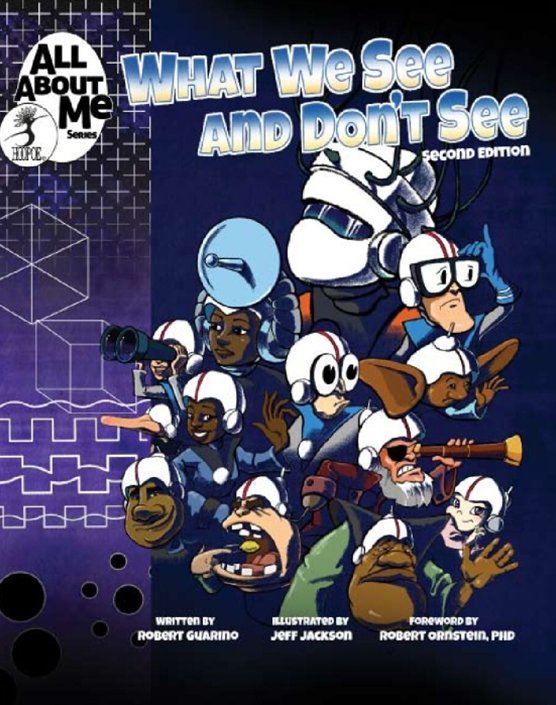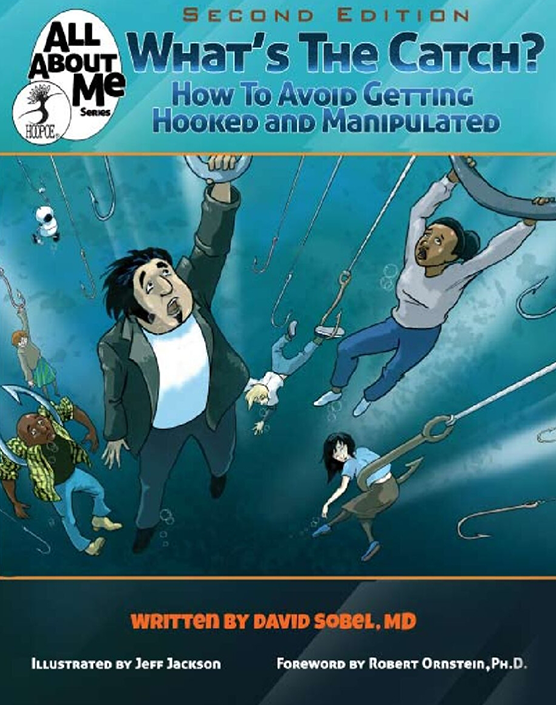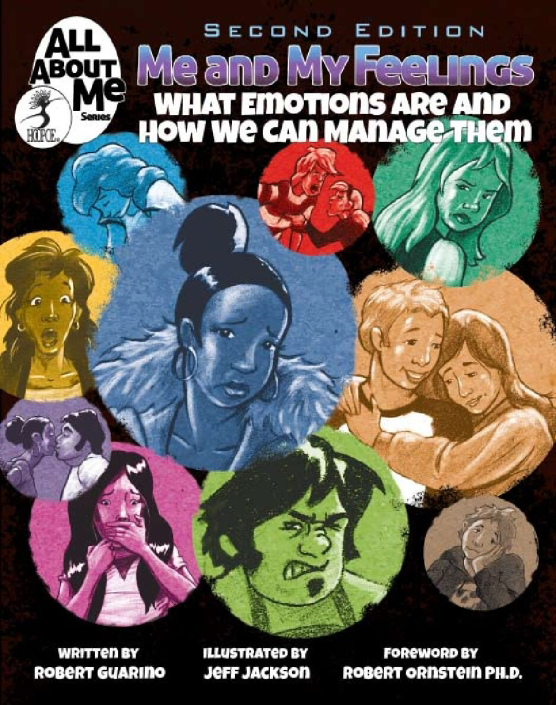What’s The Catch? How to Avoid Getting Hooked and Manipulated (Second Edition)
By David Sobel, M.D. | Illustrated by Jeff Jackson | Foreword by Robert Ornstein, Ph.D.
Ages:12–18+
ISBN: 978-1-953292-32-2 (paperback) $18.95
ISBN: 978-953292-33-9 (ePub) $8.95
ISBN: 978-953292-34-6 (Kindle) $8.95
Paperback: 156 pages
The third book in Hoopoe’s “All About Me” series, What’s the Catch? explores the ways in which our thinking, feelings and behavior are influenced by those around us. Sometimes this kind of influence is helpful, but at other times it ends up “shortchanging” us. Readers will learn to distinguish between the two kinds of situations, so that they can more easily tell when they’re really being helped and when they’re merely being manipulated, brainwashed or tricked.
Written in a clear and accessible style by physician David Sobel, What’s the Catch? is illustrated by Jeff Jackson with an appealing cast of teen characters, who act out and embody the various ways in which we’re influenced by others.
Readers will learn to become more aware of the forces nudging and pushing them, as well as how to protect themselves from unwanted and unhelpful influence. By coming to understand their own reaction patterns, they’ll be able to avoid getting “hooked.”
In What’s the Catch?, readers will discover all that scientists and researchers know about the topic, and will also explore questions that have yet to be answered. Illustrative quotes from real-life teens, as well as simple activities the reader can do to relate to the concepts presented, make the book truly come alive for young people. Also included are suggested activities for teachers to use in the classroom. What’s the Catch? can be used to supplement a high-school psychology course, or as a standalone unit in grades 8 through 12.
This new edition has been revised to incorporate the latest research findings and meet the American Psychological Association’s National Standards for Psychology at the high-school level, the College Board AP Psychology standards and the National Board Standards for Science/Adolescence and Young Adulthood.
